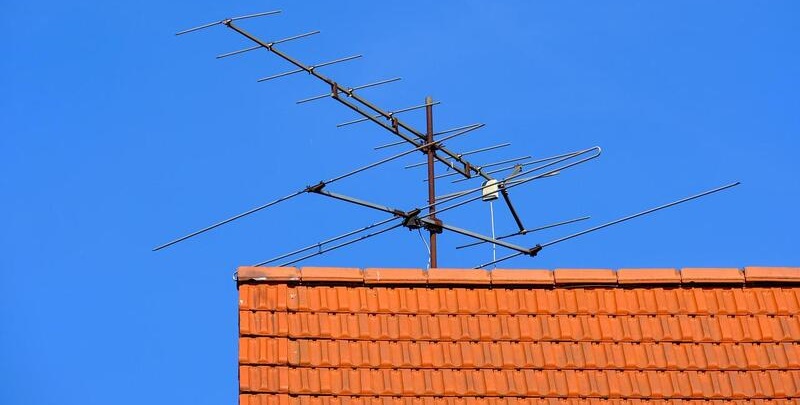
The Ever-Changing Television Antenna
The media landscape in Australia has certainly undergone significant change over the last 20 years, as it has across the globe.
Though many of us are turning to streaming media services these days over traditional media like broadcast radio stations and free to air (FTA) television, there is still very much a place in our lives for “the classics”. Which means that having a working TV antenna is still important.
According to our national broadcaster, the ABC, you should be able to get a good 10 to 15 years out of your TV antenna. So if your existing antenna is reaching the end of its life, or you haven’t replaced it since full digital signals replaced analogue in Australia in 2013, it may be time to upgrade.
Here are some important points to consider when you need to choose the right antenna for your television.
Why Do I Need a TV Antenna?
Firstly, you wouldn’t be blamed for thinking that TV antennas aren’t necessary in the era of digital TV. However, the humble antenna is still vital to receiving a television signal and enjoying digital TV at home.
Smart televisions do have antennas built into them, however, they are specifically intended for connecting your TV through Wi-Fi and Bluetooth. You will still need to install an antenna to receive the local FTA television channels, and also to retain the best defence against poor TV reception.
Are Analogue TV Antennas Still Useable?
Though analogue signals are no longer transmitted in Australia, analogue antennas are still capable of receiving digital TV signals. In terms of receiving a picture though, what matters here is channel frequency.
Though digital and analogue antennas will pick up different channel frequencies, they can receive some of the same. Basically, you’ll get some of the same free to air channels – essentially the traditional 2, 7, 9, 10 and SBS – but you will not be able to pick up all the additional digital channels attached to the primary stations.
So, in short, yes – your analogue antenna is still useable, but to see all your favourite shows across all free-to-air channels (or to hear digital radio), you’ll need a digital antenna.
The VHF vs UHF Antenna Conundrum
Unlike hats and rubber gloves, the ‘one size fits all’ approach doesn’t really work when it comes to buying TV antennas. In Australia, free-to-air television transmissions are either through Very High Frequency (VHF) or Ultra-High Frequency (UHF).
TV antennas are typically designed to pick up either VHF or UHF channels (or frequencies). Which one you need depends on the nearest transmission tower to your location, and whether that tower broadcasts through VHF or UHF.

The Further Away, the Bigger TV Antenna You’ll Need
When you’re buying a new antenna, you need to consider your location relative to the transmitter tower. The further away from the tower, the bigger the TV antenna you will need. Size does in fact matter in this instance.
Your distance from the transmitter tower may also determine what type of TV antenna installation you opt for. There is the suggestion that you may only need an indoor antenna if you live within 25km of the nearest transmissions tower.
However, if you live within a 25-to-50km radius of the nearest tower then an outdoor antenna is the best option for clear reception. Let’s take a closer look at the different options available if you need a new antenna connected.
Different Antenna Types
When you’re on the search for the best TV antenna to install, you’ll find three main options to choose from:
Indoor Antenna
If you’re looking to enjoy FTA television on a single TV, then an indoor antenna may be all you need. Depending on your location, you might lose some quality from your signal.
You can improve the signal quality, if necessary, by placing the antenna close to a window and in a high position. You may also want to shop around for TV signal boosters as well to improve the signal you’re receiving.
Outdoor Antenna
More common in Australian homes however, or on Australian homes to be more specific, is the outdoor antenna. Better suited to providing a signal to multiple TVs, outdoor antennas come in Yagi and Log Periodic options. What is the difference between the two?
- Yagi antennas = strong signal but narrower frequency rage (meaning fewer channels available)
- Log Periodic antennas = weaker signal but broader frequency range
Outdoor antennas are typically harder to install, as they are typically positioned on the roof of the house, so you’re best to have an experienced TV antenna installation professional.

Loft antenna
Somewhere in between an indoor and an outdoor antenna is what is known as a loft antenna. It is typically positioned in the roof space, making loft antenna installation not quite as difficult as an outdoor antenna but certainly a little more complicated than setting up an indoor antenna.
The loft antenna will generally provide a stronger signal than one installed indoors but may provide a weaker signal than an outdoor antenna.
How Will TV Signal Boosters Help Me?
Depending on the type of antenna installation you choose, you may need to consider whether you need a TV signal booster as well. TV signal boosters are particularly useful for TV viewers who are unable to receive a perfectly functioning signal.
In the digital TV age, a signal booster can reduce the likelihood of pixellation or complete signal drop out by amplifying the signal and improving the reception.
Get All Free to Air Channels & Stop Poor TV Reception
To access all FTA stations available in Australia, and reduce the likelihood of substandard TV reception, you will need a TV antenna. The important points to consider when you shop around for the right antenna are:
- Whether you need a VHF or UHF antenna
- The size of the antenna
- The point of installation for your antenna (indoor, outdoor or roof space)
- Whether you require a signal booster
If you’ve had an existing antenna for about 10 to 15 years, it may be time to consider an upgrade.
Contact Mr Emergency’s electrical experts about the best option for your home. Our electrical experts will show up with the right cables and equipment to boost your connection.
Please note: This information is provided for advice purposes only. Regulations differ from state to state, so please consult your local authorities or an industry professional before proceeding with any work. See our Terms & Conditions here.



